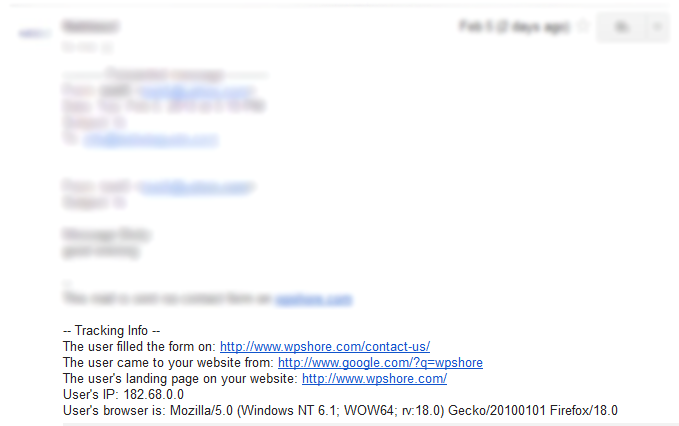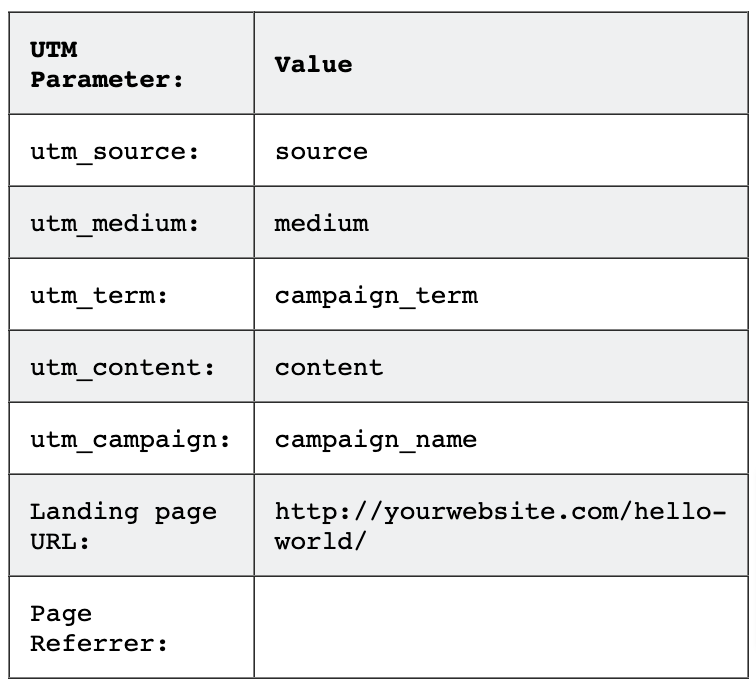Ever wonder what happens after a user clicks “Submit” on your WordPress Contact Form 7 form? The real magic begins there. Every submission is a clue, a chance to understand your audience better.
That’s where form submission tracking begins — the key to understanding your users and improving your website’s performance.
But how do you track these moments? How do you see which forms are getting attention or where users are dropping off?
Tracking in WordPress can unlock these answers. With the proper setup, Contact Form 7 becomes more than just a contact tool. It becomes a powerful way to collect insights, drive decisions, and optimise your site’s performance.
In this article, we’ll show you how to set up tracking for every submission. Let’s turn those clicks into actionable insights and unlock your site’s full potential.
Ready to track and grow? Let’s begin!
Table of Contents
- What is Form Submission Tracking in WordPress?
- Why Tracking Contact Form 7 Submissions Matters for Conversions
- Key Benefits of Tracking Contact Form 7 Form Submissions
- Best WordPress Plugins to Track Contact Form 7 Submissions & Leads
- 1.Controls for Contact Form 7 – Advanced Form Analytics & Event Tracking Plugin
- 2. Contact Form 7 Leads Tracking – Capture IP, Referrer & Browser Data
- 3. Contact Form 7 Google Analytics Integration – Track Form Events in GA4
- 4. Easy UTM Tracking for Contact Form 7 – Track Traffic Sources & Campaigns
- 5. Source Medium Tracker – Track UTM Parameters in Contact Form 7 Submissions
- Comparison of the Best Contact Form 7 Tracking Plugins for WordPress
- FAQ – Contact Form 7 Tracking in WordPress
- Boost WordPress Conversions with Contact Form 7 Tracking
What is Form Submission Tracking in WordPress?
Tracking is the process of monitoring and recording user actions on your website. It helps you understand how visitors interact with your forms, pages, and content. In simple terms, it’s like having a window into your audience’s behaviour.
For WordPress, tracking can mean different things. With Contact Form 7, it’s all about tracking form submissions.
When a user fills out a form, tracking captures data, including the time they submitted it. Tracking captures where they came from and the information they provided.
Why Tracking Contact Form 7 Submissions Matters for Conversions
Imagine running a race without knowing where the finish line is. That’s what it’s like trying to grow your website without tracking. You need data to guide your decisions and make sure you’re on the right track.
Tracking gives you a clear picture of your website’s performance.
With Contact Form 7, you can see how your users are engaging, what they need, and how you can improve. It’s the map you need to navigate your growth.
Here’s why it’s a game-changer:
- Spot trends: Tracking shows patterns in user behaviour. You can see what’s working and what isn’t. This lets you focus your efforts where they matter most.
- Fix what’s broken: If your forms are confusing or users are dropping off. Tracking will help you identify the issue. Fixing these issues leads to a better user experience and higher conversion rates.
- Drive decisions: Data isn’t just numbers; it’s insight. Tracking helps you make informed decisions. It’s refining your design or optimising your marketing efforts.
- Grow with purpose: Each piece of data tells a story. With tracking, you gain a deeper understanding of your users. This allows you to adjust your content, forms, and strategies to match their needs.
Key Benefits of Tracking Contact Form 7 Form Submissions
Tracking is like having a backstage pass to your website’s performance. It’s the inside scoop that helps you make more brilliant moves. Without it, you’re flying blind. With it, you get the clarity you need to grow.
Here’s how tracking gives you an advantage:
- Understand your audience: Tracking shows exactly who’s filling out your forms. Are they new visitors or loyal ones? This insight helps you tailor your message.
- Identify problems: If a user leaves a form, tracking tells you why. It could be the design, the fields, or the timing. Knowing this lets you fix it fast.
- Turn clicks into conversions: The more you track, the more you can optimize. Little tweaks, such as changing a button color or adjusting a form field, can significantly increase conversions.
- Track what matters: Every form submission gives you valuable data. Tracking helps you focus on what works, saving time and effort on what doesn’t.
- Learn and improve: Over time, tracking shows trends and patterns. What’s bringing in the leads? What’s causing drop-offs? With this knowledge, you can purify your strategy.
Best WordPress Plugins to Track Contact Form 7 Submissions & Leads
Choosing the right Contact Form 7 Tracking Plugin is key to understanding your form submissions. Let’s explore the best plugins that offer simple integration and powerful tracking features. These tools will help you gather valuable data and improve your forms’ performance.
1.Controls for Contact Form 7 – Advanced Form Analytics & Event Tracking Plugin

The Controls for Contact Form 7 plugin is a comprehensive solution that takes your form management to the next level. It not only allows you to track form submissions and errors but also provides insights into user behaviour.
Controls for Contact Form 7 provides insights into user behaviour and integrates with Google Analytics, Facebook Pixel, and Matomo.
Controls for Contact Form 7 plugin make it easy to track and optimize the form. It performs by sending detailed events about submissions, errors, and spam submissions. Additionally, it offers the ability to store form data in your WordPress database or TablePress.
Controls for Contact Form 7, ensuring that essential submission data is always available for review and analysis. With customizable redirections, you can safely guide users to follow-up pages. It also enhances their overall experience.
Key Features
- Google Analytics Integration: Tracks form events, such as submission, error, and completion, automatically.
- Form Redirection: Redirect users to any URL after form submission.
- Submission Storage: Save form data in WordPress or TablePress for easy access and recovery.
- Event Tracking: Automatically starts events for Google Analytics, Matomo, and Facebook Pixel.
- Customizable Form Options: Disable AJAX, change form CSS. Configure reCAPTCHA language.
- Easy Management: Adds a “Controls” tab to manage settings for each form.
Pros
- Powerful integration with analytics tools
- Detailed tracking of form events
- Supports multiple tracking platforms
- Form submission storage for review
- Flexible form customization options
Cons
- Some features are limited to per-page
- Requires an additional plugin for storage
- It can be complex for beginners
2. Contact Form 7 Leads Tracking – Capture IP, Referrer & Browser Data

The Contact Form 7 Leads Tracking Plugin is a powerful tool for capturing detailed information about your form leads. This plugin tracks valuable data, including the user’s IP.
Contact Form 7 Leads Tracking provides browsing details, including the landing page and referrer, for each lead. It can help you understand user behaviour and improve your marketing strategy.
By adding a simple [tracking-info] shortcode to your Contact Form 7 emails, you can automatically include this tracking information in each lead’s submission email.
The Contact Form 7 Leads Tracking plugin is ideal for anyone who needs to track leads. Who is looking to gather more insights from their Contact Form 7 submissions? It ensures that every lead is properly tracked from their first interaction to submission.
Key Features
- User Tracking: Captures user IP and browser details for each form submission.
- Referrer Information: Tracks the URL from which the user came.
- Landing Page: Stores the first page the user visited on your site.
- Easy Email Integration: Add a shortcode to your outgoing emails to capture lead data.
- User Agent / Browser: Tracks the browser used by the visitor. Ensures cross-browser compatibility for a better user experience.
Pros
- Tracks user behaviour in detail
- Simple to add a shortcode to emails
- Provides useful lead information
- Great for analyzing marketing campaigns
- Works safely with Contact Form 7
Cons
- Limited customization options
- No direct integration with analytics tools
- Requires manual shortcode setup
3. Contact Form 7 Google Analytics Integration – Track Form Events in GA4

Contact Form 7 Google Analytics plugin combines your forms with Google Analytics. It automatically tracks form submissions and sends event data to your analytics dashboard.
Contact Form 7 Google Analytics allows you to measure and optimize form relations in real-time. The Contact Form 7 Google Analytics plugin provides key insights. It helps track ads, monitor organic traffic, and assess user engagement. This data is valuable for improving your strategy.
It supports all major Google Analytics plugins and tracks submission events with detailed categories and labels. Contact Form 7 Google Analytics is a must-have for improving your form conversion analysis. It also optimizes your website’s performance.
Features
- Google Analytics Event Tracking: Sends form submissions to Google Analytics as events. Easily track submissions as they happen.
- Multiple Plugin Compatibility: Works with popular Google Analytics plugins like MonsterInsights and ExactMetrics.
- Event Categories and Labels: Tracks form submission events with a custom category and labels for easy analysis.
- Supports Universal Analytics: Compatible with both new and older Google Analytics versions. It also ensures broad compatibility.
Pros
- Easy to integrate with Google Analytics.
- Helps track form submission events.
- Works with several popular Analytics plugins.
- Provides detailed insights for form performance.
Cons
- No visual form submission tracking.
- Doesn’t capture UTM parameters or other traffic sources.
4. Easy UTM Tracking for Contact Form 7 – Track Traffic Sources & Campaigns

Easy UTM Tracking with Contact Form 7 is a simple yet powerful tool. It automatically captures UTM parameters from your form submissions. This means you can easily track where your visitors are coming from.
Which drives are driving the most engagement? With just one click, UTM data is stored and carried across your website. It ensures that no valuable information is lost.
The Easy UTM Tracking plugin for Contact Form 7 is perfect for marketers. It tracks traffic sources and measures campaign success. It ensures all UTM parameters are included in form submission emails. Easy UTM Tracking with Contact Form 7 helps for future reference and analysis.
Features
- Automatic UTM Parameter Tracking: Tracks UTM parameters like source, medium, and campaign. Helps measure marketing campaign effectiveness.
- One-Click Installation: Simple and easy to install. No coding or complex setup is required.
- Referrer Data: Stores the traffic source and referrer URL. Understand where your traffic is coming from and optimize accordingly.
- Persistent UTM Tracking: UTM data is stored across multiple pages. You won’t lose valuable tracking information as users navigate your site.
- Email Integration: Automatically includes the tracked UTM parameters in the form of submission emails for easy retrieval.
Pros
- Tracks UTM parameters automatically.
- Quick and simple installation process.
- Easily integrates with form submission emails.
- Helps track campaign performance across pages.
Cons
- Limited to UTM and referrer data tracking.
- No advanced analytics or reporting features.
- Doesn’t integrate with Google Analytics or Ads.
5. Source Medium Tracker – Track UTM Parameters in Contact Form 7 Submissions

Source Medium Tracker for Contact Form 7 provides detailed tracking of where your leads are coming from. It captures key UTM parameters like source and medium from your marketing campaigns.
Source Medium Tracker for Contact Form 7 plugin combines smoothly with Google Ads and Google Analytics, providing deeper insights into your campaigns. It allows you to track conversions from form submissions and analyze them in real time.
With built-in dashboards and easy configuration, you can monitor form submissions by source, campaign, and medium. Source Medium Tracker for Contact Form 7 plugin simplifies tracking. It helps you distribute resources more effectively based on campaign performance.
Features
- Source/Medium Tracking: Captures the utm_source and utm_medium parameters from marketing campaigns. Understand where your leads are coming from.
- Google Ads Conversion Tracking: Sends conversion events to Google Ads. Tracks campaign success and optimizes ad performance.
- Detailed Analytics: Provides in-depth reports on form submissions by source and medium. Helps assess which marketing efforts are most effective.
- Dashboard Widget: Displays daily submission statistics and customizable graphs for easy tracking.
- Google Analytics Integration: Sends form submission data to Google Analytics 4 (GA4) for deeper insights.
- Easy Configuration: Manage settings directly from the WordPress dashboard with minimal setup.
Pros
- Tracks both source and medium effectively.
- Integrates well with Google Ads and GA4.
- Easy to set up from the dashboard.
- Provides actionable marketing insights.
Cons
- Requires Google Ads and GA setup.
- It may be too advanced for beginners.
- Focused mainly on Google platforms.
Comparison of the Best Contact Form 7 Tracking Plugins for WordPress
| Plugin Name | User Experience | Ease of Use | Features & Integration | Ideal For | Rating |
|---|---|---|---|---|---|
| Controls for Contact Form 7 | Advanced | Moderate | GA, FB Pixel, Matomo, Redirection | Power users & marketers | ★★★★☆ |
| CF7 Leads Tracking | Moderate | Easy | IP, browser, referrer, landing page | Lead generation | ★★★★☆ |
| CF7 Google Analytics Integration | Basic to Good | Very Easy | GA event tracking, plugin-friendly | GA beginners | ★★★★☆ |
| Easy UTM Tracking for CF7 | Good | Very Easy | UTM & referrer tracking | Campaign managers | ★★★★☆ |
| Source Medium Tracker for CF7 | Advanced | Moderate | UTM, GA4, Google Ads, Dashboard | Ad & SEO professionals | ★★★★★ |
FAQ – Contact Form 7 Tracking in WordPress
How do I track Contact Form 7 submissions in Google Analytics?
Use a plugin like “Contact Form 7 Google Analytics” or setup event tracking via Google Tag Manager.
Can I capture UTM parameters with Contact Form 7?
Yes, plugins like “Easy UTM Tracking for Contact Form 7” automatically capture and store UTM data.
What’s the best free Contact Form 7 tracking plugin?
“Controls for Contact Form 7” offers free features like submission tracking and GA integration.
Boost WordPress Conversions with Contact Form 7 Tracking
Ready to turn your form submissions into gold? Tracking is your secret weapon. It’s not just about capturing data; it’s about understanding your users. Each submission tells a story. Where are your users coming from? What catches their attention?
With tracking, you unlock the power of insights. You can spot patterns, fix issues, and optimize your forms. Tracking helps you create a better user experience. It guides your decisions and boosts conversions.
It’s like having a map to navigate your site’s growth. Don’t guess—track and know. Install one of these Contact Form 7 tracking plugins today and start turning your form submissions into powerful user insights and conversions.

